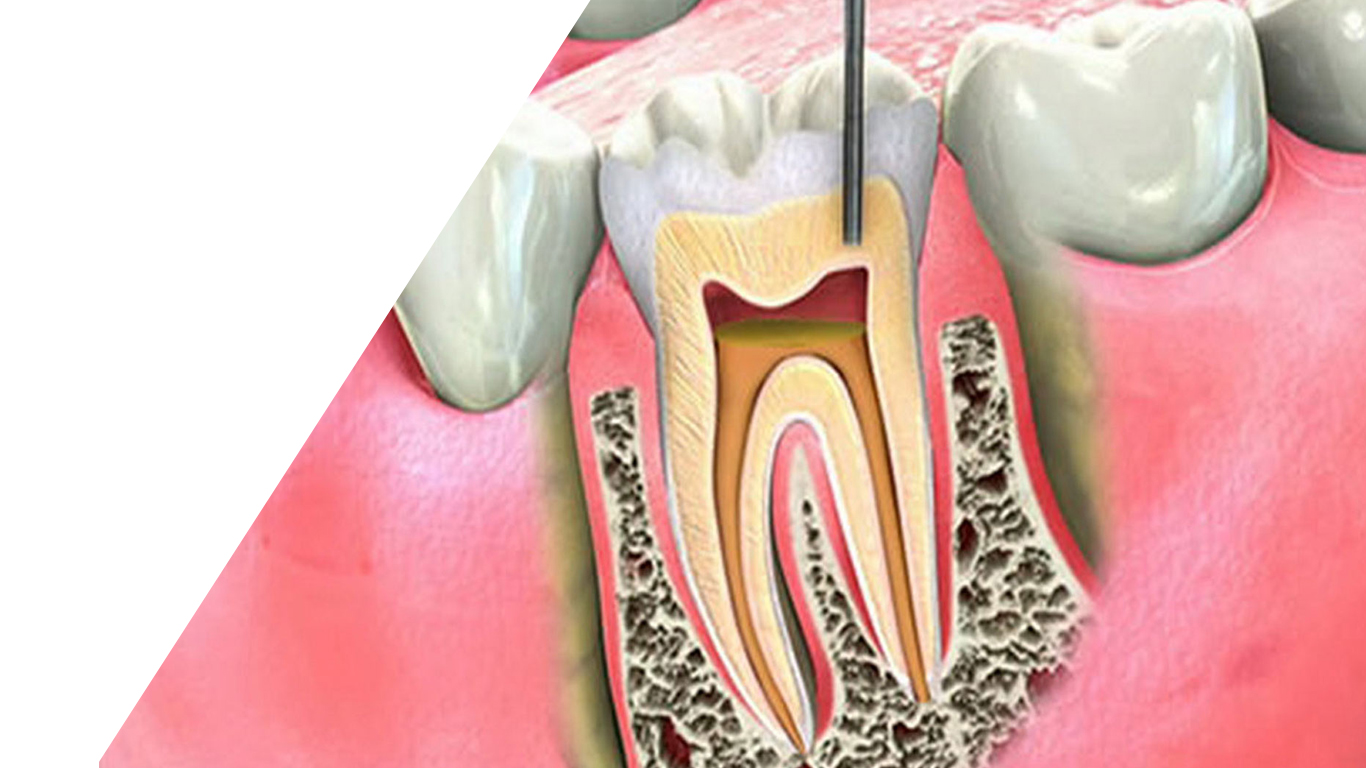Date of update: 2023-02-21 11:13:45
Endodontics - Root Canal Treatment
Endodontics is a branch of dentistry that deals with the treatment of root canals in teeth. Under the enamel and dentin layers of the tooth, there is a section called "pulp" where the vessels and nerves that provide the vitality of the tooth are located. This section, called the "pulp chamber" in the crown of the tooth, extends to the end of the tooth roots. If the pulp becomes inflamed for any reason, the nerve of the tooth must be removed, the canals sterilized and then filled. Root canal treatment is usually performed in one session for living teeth and in two sessions for teeth that have lost their vitality.
Every person has bacteria in the oral cavity. Bacteria combine with many foods we take and cause acids to form in our mouths. If we do not pay attention to our oral hygiene, these acids damage the tooth enamel and cause caries in the enamel layer. If the cavities in the enamel are not treated, they pass to the dentin layer under the enamel layer. Although the dentin layer warns us through pain, if the decay is not treated again, this time the microorganisms move towards the pulp. In the meantime, the pulp warns us through pain to protect itself. But if we do not have our tooth treated again, after a while, the microorganisms destroy the vessels and nerves in the pulp and cause inflammation.
Another way for inflammation to occur in the pulp is trauma. A blow to the tooth causes the vessels and nerves entering the root of the tooth from the root tip to break, thus causing the tooth to lose its vitality.

Adding microorganisms to this condition by any means causes inflammation of the pulp. Another way in which the pulp can become infected is if there is long-term periodontal (gum and surrounding) disease around the tooth.
Pain and sensitivity in the teeth to cold and hot foods and beverages, pain during eating are signs of inflammation and the onset of an inflammation. Again, excessive color changes in the teeth can also be perceived as a sign of inflammation. Apart from these, in teeth where the decay reaches the pulp but is not treated, the infection can go from the root tip to the jawbone and cause small or large swelling on the face. In this case, in addition to the procedures performed by the dentist, the use of antibiotics is also appropriate in the fight against infection. The general opinion is that the tooth that causes swelling on the face should be removed after the swelling subsides. According to new technology, even teeth that cause such large infections can now be kept in the mouth by canal treatment and can serve you for years like healthy teeth.
Treatment Methods
Radiography is taken to identify the problematic tooth.
If the tooth is alive, local anesthesia is applied to eliminate sensitivity in the tooth and surrounding tissues.
Cleaning the caries in the enamel and dentin layers of the tooth and creating a cavity to reach the pulp.
Isolation of the tooth by placing a rubber dam.
Determination of the working length using electronic instruments and confirmation with radiography.
Destruction and removal of infected dentin layers and microorganisms in the root canal using rotary instrument systems.
Destruction of microorganisms with various root canal disinfectants while using rotary instrument systems in root canals.
If the tooth is not alive when starting root canal treatment, waiting for a certain period of time with a canal antiseptic to be placed in the root canal and filling the root canals at the next meeting
After root canal treatment, the tooth is cut off from the surrounding tissues to prevent infection and to repair any damage to the surrounding tissues. Root canal treatment is performed under local anesthesia and there is no pain.
Following root canal treatment, especially after the treatment of living teeth, there may be a bearable pain in the tooth for a few days or pain when pressed on the tooth. This is a normal pain after root canal treatment. It disappears in a short time with some protection of the root canal treated tooth. Today, the success rate of root canal treatments with the right treatment method is up to 90%.
